IGIDR Question bank 2019 PDF

| Title | IGIDR Question bank 2019 |
|---|---|
| Course | Micro Economics |
| Institution | Goa University |
| Pages | 53 |
| File Size | 1008.8 KB |
| File Type | |
| Total Downloads | 75 |
| Total Views | 119 |
Summary
Official sample paper of IGIDR...
Description
INDIRA GANDHI INSTITUTE OF DEVELOPMENT RESEARCH General A.K. Vaidya Marg, Santosh Nagar, Goregaon (East), Mumbai - 400 065
M.Sc ENTRANCE EXAM SAMPLE QUESTIONS BASIC MATHEMATICS, ECONOMICS AND ADVANCED MATHEMATICS
This document consists of two sets of Sample Questions (SET I and SET II) of the M.Sc Entrance Exam, which is in addition to the sample questions given in the Information Handout. Please note that the sample questions are provided for three sections of the admission test question paper -- Basic Mathematics (Test II) and Economics (Test IIIA) or Advanced Mathematics (Test IIIB). The questions are illustrative and not exhaustive. In the actual examination you may find questions of a higher difficulty level on some or all of these types and also questions on the types not mentioned here.
_____________________________________________________________________________________________________________________
SET I Test II: TEST OF BASIC MATHEMATICS This test is designed to examine the candidate’s mathematical abilities. Q.1. Let ( )
(
)
Then,
( ) is:
(1) 1 (2) 0 (3) e (i.e., exponent) (4) Undefined (5) None of the above. Q.2. The function ( )
is
(1) Convex (2) Concave (3) Linear (4) Quasi-linear (5) None of the above. Q.3. Given ( ) √ , then
( ( )) is:
(1) (2) (3) √
(4) √
(5) None of the above.
IGIDR Sample Questions for M.Sc. Programme
Page 1 of 53
Q.4. Six horses are running a race. How many different groups of horses could make up the first three finishers? (1) 6 (2) 18 (3) 20 (4) 120 (5) 720 Q.5. What are the values of x that satisfy the equation x2+4x+3=0 (1) -3 (2) -1 (3) -3 and -1 (4) 3 and 4 (5) 4 Q.6. A company’s profits have doubled for each of the 4 years it has been in existence. If the total profits for the last four years were Rs. 30 million, what were the profits in the first year of operation? (1) Rs.1 million (2) Rs. 2 million (3) Rs. 4 million (4) Rs.4.5 million (5) Rs. 6 million. Q.7. Find the area of the triangle ABC whose vertices are A(1,-1,2) , B(2,1, -1) and C (3,-1,2) (1) √
(2) √ (3) √
(4) √ (5) 13
Q.8. The number of solutions of x 1 x 1 is (1) 0 (2) 1 (3) 2 (4) 3 (5) None of the above
IGIDR Sample Questions for M.Sc. Programme
Page 2 of 53
Q.9. Find the sum of the infinite series whose nth term is
( )
(1) 2e-1 (2) 2e+1 (3) e-1 (4) e+1 (5) 2e Q.10. The ratio of sum of first 3 terms of a Geometric Progression to the sum of first 6 terms is 64:91. The common ratio of GP is (1) (2) (3) (4) (5) None of the above varies with respect to the sum of 2 components; of which one varies directly with and the 10 other inversely with . If = 6, = 4 and if = , = 3; the relation between X and Y is, 3
Q.11.
(1) (2) (3) (4) (5) None of the above 1 1 1 1 1 1 Q.12. The sum of the series 1 . . 2 . 3 ......... ? 3 4 5 4 7 4 (1) ln 3 (2) ln 4 (3) ln 2 (4) ln 5 (5) None of the above
IGIDR Sample Questions for M.Sc. Programme
Page 3 of 53
Q.13. If the line y= mx+5 be a tangent to the ellipse 7x2 + 9y2 = 63, then m = ? (1) 1 (2) 2 (3) -1 (4)
2
(5) None of the above Q.14. The common region represented by the inequalities 3x+5y 15, 5x+2y 10, x 0 and y 0 is (1) a triangle (2) a quadrilateral (3) a rectangle (4) a pentagon (5) None of the above
Q.15. Lt
x a
x sin a a sin x is equal to xa (1) sin a (2) – a cos a (3) sin a a cos a (4) a sin a (5) None of the above
Q.16. X= 6-8i, where i is imaginary. Then X is (1) 1 (2) 10 (3) 9 (4) 16 (5) 5 Q.17. Radius of the circle (1) 4 (2) 3 (3) 2 (4) 6 (5) 10
IGIDR Sample Questions for M.Sc. Programme
Page 4 of 53
Q.18. = (1 y ) 4 and y 2 log t . The derivative of with respect to t is (1) (2)
( )
(3)
( )
(4)
( )
(5)
( )
as
Q.19. The limit of
Q.20.
is equal to
(1) (1)
0
(2) (2)
π
(3) (3)
∞
(4) (4)
1
(5) (5)
log c
Find (1) (2) (3)
(4)
(
()
)
( )
( ) (
(
)
)
(5) None of the above 5 Q.21. The derivative of the inverse of the function y f ( x) ( x 3) is given by
1
(1)
1 ( y 3) 5 5 4
4 (2) ( y 3) 5 5 1
(3)
4 ( y 3) 5 5
(4)
1 5 ( y) 5
4
(5) None of the above
IGIDR Sample Questions for M.Sc. Programme
Page 5 of 53
2 2 Q.22. The equation of the tangent to the circle x y 6 x 2 y 2 0 at the point (1,-1) is:
(1) (2) (3) (4) (5) None of the above , given initial value ( )
Q.23. Solve
(1) 2+5t (2) 5+2t (3) 2t (4) 2 +5t (5) 5 +2t Q.24. A card is selected at random from a deck of 52 cards. What is the probability that the card selected is a Queen or a Spade? (1) (2) (3) (4) (5) Q.25. Out of 50 consecutive natural numbers, two are chosen at random. What is the probability that the sum of the numbers is odd ? (1) (2) (3) (4) (5) None of the above
IGIDR Sample Questions for M.Sc. Programme
Page 6 of 53
Q.26. If sum of the roots of ax 2 bx c 0 is equal to the sum of their squares then, (1) 2ab ac c
2
(2) 2ab bc c
2
(3) 2bc ac c
2
(4) 2bc ab b
2
(5) 2ac ab b
2
2 2 Q.27. The distance between foci of the hyperbola x y 16 is
(1) 8 (2) 8 2 (3) 2 8 (4) 4 (5) None of the above Q.28. If the function
()
( )( )
has a local maxima at (2, -1), then
(1) b =1, a =0 (2) a=1, b = 0 (3) b = -1, a =0 (4) a = -1, b =0 (5) None of the above √
Q.29.
√
implies
(1)
( )
(2)
( )
(3)
( )
(4)
( )
is equal to
( )
(5) None of the above Q.30. If ( ) ()
(1) 24
( ( )) ()
( )
()
(2) 8
( )
()
(3) 12
IGIDR Sample Questions for M.Sc. Programme
(4) 20
(5) None of the above
Page 7 of 53
Q.31.If ∫
()
(1) -2
Q.32.∫ |
∫ [
( )]
then the value of ∫
()
is
(2) 3
(3) 5
(4) 8
(5) None of the above
(2) 2
(3) -2
(4) 0
(5) None of the above
|
(1) 4 Q.33. Function ( )
has
(1) Many maxima and many minima (2) No maxima and no minima (3) Only one minima (4) Only one maxima (5) None of the above Q.34. If ( ) √ and ( )
()
(1) (2) (3) (4)
(5) None of the above Q.35. Suppose that there is a 6-sided die that is weighted in such a way that each time the die is rolled, the probabilities of rolling any of the numbers 1 to 5 are all equal but the probability of rolling a 6 is twice the probability of rolling a 1. When you roll the dies once, the 6 outcomes are not equally likely. What is the probability of the most likely event? (1) 1/7 (2) 2/7 (3) 1/3 (4) 1/6 (5) 1/2
IGIDR Sample Questions for M.Sc. Programme
Page 8 of 53
Q.36. Find the mean of the following probability distribution X
8
12
16
20
24
P(X)
1/8
1/6
3/8
1/4
1/12
(1) 20 (2) 12 (3) 16 (4) 18 (5) 24 Q.37. Let
√(
). What is
?
(1) (2)
√(
)
(3) (4) (5) None of the above Q.38. Find for
.
(1)
(
)
(
)
(2) (3) (4)
(
(
)
)
(5) None of the above Q.39. The equation defines a curve passing through the point A(1,2). What is the equation of the tangent to the curve at A. (1) (2) (3) (4) (5) None of the above
IGIDR Sample Questions for M.Sc. Programme
Page 9 of 53
Q.40. What is the solution set for the equation
√
.
(1) {5} (2) {20} (3) {-5,20} (4) {5,20} (5) None of the above
IGIDR Sample Questions for M.Sc. Programme
Page 10 of 53
SET I TEST III A TEST OF ECONOMICS This test is designed to examine the candidate’s abilities in basic microeconomics and macroeconomics.
Q.1. Do you think a firm operating in a competitive market should shutdown if its revenue is R = 1000 Rupees per week, its variable cost is VC = 500 Rupees, and its sunk fixed cost is F = 600 Rupees? (1) It should shutdown. (2) It should not shutdown. (3) It should shutdown if R is greater than VC. (4) It should shutdown if R is greater than F. (5) None of the above.
Q.2. Suppose that two linear demand curves go through the initial competitive market equilibrium, given by e*. One demand curve is less elastic than the other one at this equilibrium e *. Can you say for which demand curve will a price increase cause the larger consumer surplus loss? (1) Consumer surplus loss is more for less elastic demand curve. (2) Consumer surplus loss is more for more elastic demand curve. (3) Consumer surplus loss is equal across demand curves. (4) Consumer surplus does not apply to competitive market equilibrium. (5) None of the above.
Q.3. Monopsony is a market with: (1) Many Sellers, Many Buyers (2) Single Seller, Many Buyers (3) Many Sellers, Single Buyer (4) Two Sellers, Two Buyers (5) None of the above.
IGIDR Sample Questions for M.Sc. Programme
Page 11 of 53
Q.4. XYZ Satellite Company broadcasts TV to subscribers in Mumbai and Pune. The demand functions for each of these groups are qM = 60 – 0.25 pM and qP = 100 – 0.50 pP, where qM and qP are in thousands of subscriptions per year in Mumbai and Pune respectively, and pM and pP are the subscription prices per year in Mumbai and Pune respectively. The cost of providing q units of service is given by C = 1000 + 40q, where q = qM+qP. The profit maximizing prices and quantities for Mumbai and Pune markets are: (1) (2) (3) (4) (5) None of the above.
Q.5. Well behaved Consumer preferences are: (1) Concave (2) Convex (3) Both Concave as well as Convex (4) Sine curve (5) None of the above.
Q.6. Lexicographic Preference Relation is: (1) Not a valid preference relation, but continuous (2) Valid preference relation, but not continuous (3) Not a valid preference relation, and also not continuous (4) Valid preference relation, but continuous (5) None of the above.
Q.7. Suppose there are two commodities x and y and that an economic agent’s indifference curves are
⁄ for different values of the parameter K. Can these given by the equation of the form ( ) preferences be represented by the Cobb-Douglas utility function?
(1) No (2) Yes (3) There is nothing called a Cobb-Douglas utility function. (4) This has something to do with producer theory but has no relevance to consumer theory. (5) None of the above.
IGIDR Sample Questions for M.Sc. Programme
Page 12 of 53
Q.8. Risk averse individuals are: (1) Willing to pay a risk premium (2) Are not willing to pay a risk premium (3) Are willing to accept risk premium (4) Are not willing to accept risk premium (5) None of the above.
Q.9. Given below is a table of the number of Televisions (TVs) purchased by a household and the marginal and total utility derived from these. Based on the table what is the marginal utility of the 4th TV? TVs
Total Utility
Marginal Utility
1
15
15
2
25
3 4
7 37
(1) 10 (2) 15 (3) 7 (4) 5 (5) 37
Q.10. As compared to a perfectly competitive industry with the same costs, the equilibrium price for a monopoly would be (1) higher than the case of perfect competition, with equilibrium quantities being lower than in the case of perfect competition. (2) higher than the case of perfect competition, with equilibrium quantities too being higher than in the case of perfect competition. (3) lower than the case of perfect competition with equilibrium quantities being higher than in the case of perfect competition. (4) lower than the case of perfect competition with equilibrium quantities being lower than in the case of perfect competition. (5) lower than the case of perfect competition with equilibrium quantities being the same as in the case of perfect competition.
IGIDR Sample Questions for M.Sc. Programme
Page 13 of 53
Q.11. If a fisherman must sell all of his/her daily catch before it spoils for whatever price (s)he is offered, once the fish are caught the fisher(wo)man's price elasticity of supply for fresh fish is (1) Zero (2) Infinite (3) One (4) Two (5) Unable to determine from this information Q.12. When marginal costs are below average total costs, (1) average fixed costs are rising (2) average total costs are falling (3) average total costs are rising (4) average total costs are minimized (5) None of the above
Q93-Q95 are based on the following figure:
Q.13. If there is no tax placed on the product in this market, consumer surplus is the area denoted by (1) C + D + F (2) A (3) A + B + E (4) D + C + B (5) D
IGIDR Sample Questions for M.Sc. Programme
Page 14 of 53
Q.14. If there is no tax placed on the product in this market, producer surplus is the area (1) A+B+E (2) D (3) C+F (4) A+B+C+D (5) A Q.15. If a tax is placed on the product in this market, tax revenue paid by the buyers is the area (1) B+C+E+F (2) B (3) B+C (4) A (5) E+F Q.16. National income is nothing more than the sum of all individual incomes. With regard to national income accounts which of the following statements are false. a. In national income accounts income earned and income receipts are not identical concepts. b. In national income accounts capital gains are not counted as a part of income. c. An increase in inventories of only intermediate goods is counted as a part of national product. (1) a and b (2) b and c (3) a and c (4) c only (5) a only Q.17. Consider a closed economy. Suppose we assume that i~+g [planned investment (which includes planned inventory accumulation) + govt. expenditure] are fixed i.e. they do not vary with income, and the sum of s+t (savings plus taxes) is positively related to income. For some reason people now desire to save more, which of the following statements would be true. a. s+t will be unchanged but income will fall. b. s+t will be unchanged and income will rise. c. s+t will rise and income will be unchanged. (1) a only (2) a and b (3) b and c (4) a and c (5) c only
IGIDR Sample Questions for M.Sc. Programme
Page 15 of 53
Q.18. Equilibrium in the product market is represented by the IS curve. With respect to the equilibrium in the product market which of the following statements are true. a. The IS curve represents a causal relation between the rate of interest and income. b. The slope of the IS curve is influenced by the marginal propensity to consume. c. An increase in government expenditure shifts the IS curve to the right.
(1) a only (2) a and b (3) b and c (4) a and c (5) c only Q.19. Money is the stock of assets that can be readily used to make transactions. With respect to the various issues regarding the definition, measurement and evolution of money which of the following statements are true. a. Attempts by governments to reduce transaction costs and changes in technology largely explain the evolution of money in modern times. b. Disagreements about monetary policy sometimes arise because different measures of money may move in different directions. c. Widespread use of automatic teller machines in recent years has decreased the velocity of money. (1) a and b (2) b and c (3) a and c (4) a only (5) c only Q.20. The national income accounts identity shows that the international flow of funds to finance capital accumulation and the international of goods and services are two sides of the same coin. In an open economy which of the following statements are false. a. Net exports (exports-imports) are always equal to output minus domestic spending. b. If savings are less than investment this reflects a trade surplus. c. If savings are less than investment this reflects the fact that net foreign investment is positive. (1) a and b (2) b and c (3) a and c (4) a only (5) b only
IGIDR Sample Questions for M.Sc. Programme
Page 16 of 53
Q.21. Stabilization Policy is Public (Monetary and Fiscal) policy aimed at keeping output and employment at their natural rates. In this context consider a simple Keynesian Macroeconomic Model of a closed economy represented by the equilibrium conditions in the product market (downward sloping IS curve), money market (upward sloping LM curve), labour market and an aggregate production function. Suppose at the initial equilibrium the government believes that unemployment rate is far above its natural rate and so it decides to increase money supply keeping government expenditure and tax rates at the initial level. In this context which of the following statements would be true? a. Investment in the new equilibrium will necessarily be lower than in the initial equilibrium. b. Both employment and output are higher in the new equilibrium. c. With a given slope of the IS curve, the increase in money supply will have a greater effect on output at higher levels of the interest rate compared to very low levels of the interest rate. (1) a and b (2) b and c (3) a and c (4) a only (5) c only Q.22. Consider a small open economy with perfect capital mobility and floating exchange rates ( a system where the exchange rate is allowed to fluctuate freely in response to changing economic conditions). The exchange rate is defined as the amount of foreign currency per unit of domestic currency and both domestic and foreign price levels are assumed to be fixed. Suppose the government initiates an expansionary fiscal policy by increasing government expenditures. Which of the following statements would be true? a. The domestic currency appreciates. b. The new equilibrium output is higher than the initial equilibrium output. c. The fiscal expansion causes a reduction in national savings. (1) a and b (2) b and c (3) a and c (4) a only (5) c only Q.23. Discounting refers directly to (1) finding the present value of a future sum of money. (2) finding the future value of a present sum of money. (3) calculations that ignore the phenomenon of compounding for the sake of ease and simplicity. (4) decreases in interest rates over time, while compounding refers to increases in interest rates over time. (5) none of the above.
IGIDR Sample Questions for M.Sc. Programme
Page 17 of 53
Q.24. A production possibilities frontier is a straight line when (1) the more resources the economy uses to produce one good, the fewer resou...
Similar Free PDFs

IGIDR Question bank 2019
- 53 Pages

Dmdw-question bank - question bank
- 17 Pages

Question bank
- 8 Pages
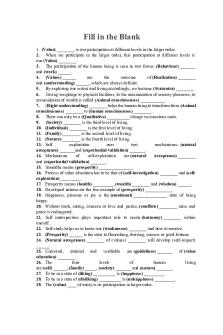
Question Bank 3question bank
- 6 Pages

Question BANK
- 19 Pages
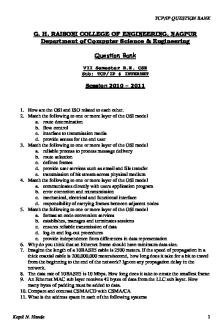
Tcp-ip-question-bank
- 25 Pages

Chapter 4 - Question Bank
- 28 Pages

DIP Question Bank Sheetal
- 14 Pages
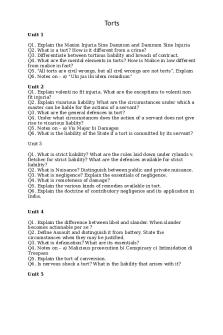
Torts Question Bank
- 2 Pages
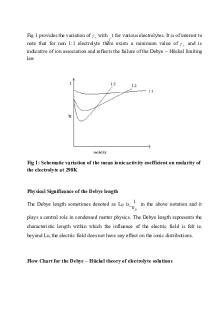
QB5 - Question Bank 5
- 104 Pages

Assessment Question Bank 1
- 22 Pages
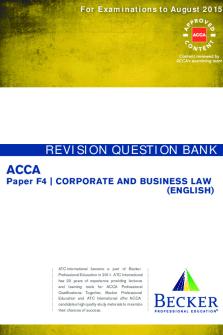
Revision Question Bank 60
- 154 Pages
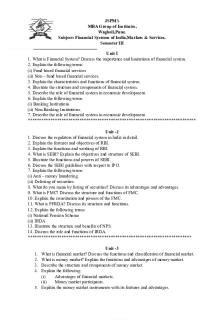
Fsims Question Bank
- 4 Pages

11. Autocad question bank
- 14 Pages
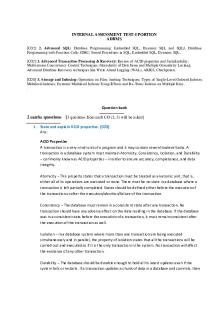
Question bank Adbms - solution
- 45 Pages
Popular Institutions
- Tinajero National High School - Annex
- Politeknik Caltex Riau
- Yokohama City University
- SGT University
- University of Al-Qadisiyah
- Divine Word College of Vigan
- Techniek College Rotterdam
- Universidade de Santiago
- Universiti Teknologi MARA Cawangan Johor Kampus Pasir Gudang
- Poltekkes Kemenkes Yogyakarta
- Baguio City National High School
- Colegio san marcos
- preparatoria uno
- Centro de Bachillerato Tecnológico Industrial y de Servicios No. 107
- Dalian Maritime University
- Quang Trung Secondary School
- Colegio Tecnológico en Informática
- Corporación Regional de Educación Superior
- Grupo CEDVA
- Dar Al Uloom University
- Centro de Estudios Preuniversitarios de la Universidad Nacional de Ingeniería
- 上智大学
- Aakash International School, Nuna Majara
- San Felipe Neri Catholic School
- Kang Chiao International School - New Taipei City
- Misamis Occidental National High School
- Institución Educativa Escuela Normal Juan Ladrilleros
- Kolehiyo ng Pantukan
- Batanes State College
- Instituto Continental
- Sekolah Menengah Kejuruan Kesehatan Kaltara (Tarakan)
- Colegio de La Inmaculada Concepcion - Cebu
